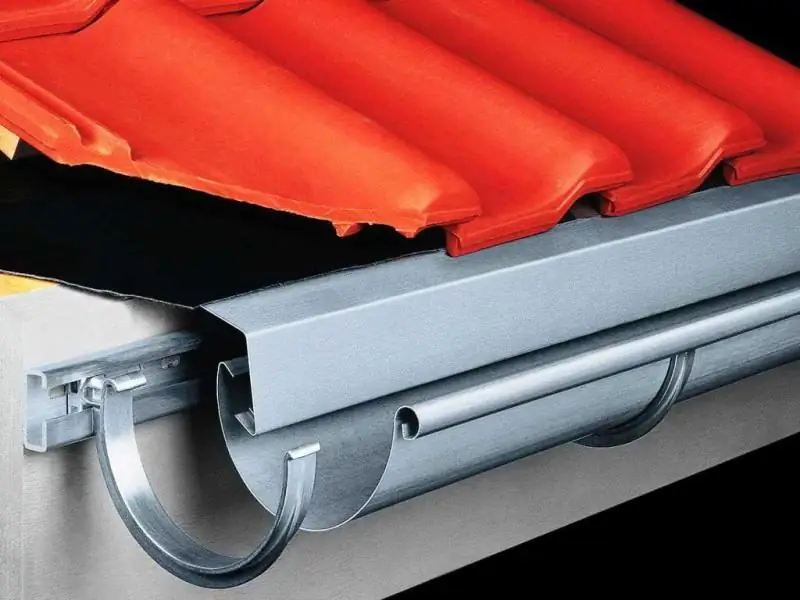
Table of contents:
- Author Bailey Albertson [email protected].
- Public 2024-01-17 22:26.
- Last modified 2025-06-01 07:32.
Dropper on a metal tile: types and secrets of installation

Today, the construction market is overflowing with roofing materials, among which metal tiles are in high demand. In order for such a coating to serve for tens of years, the joints and ends of the roof are protected with metal parts, which are usually called add-ons. Among the main additional elements is the drip bar. Its role is to prevent moisture and condensation from entering the under-roof space and to give the roof a finished look.
Content
-
1 What is a drip for metal tiles
1.1 Photo gallery: installation of eaves overhang on metal roofs
-
2 Functions of a drip tip on a metal roof
2.1 Video: why do we need a cornice strip on a metal roof
-
3 What are the droppers
- 3.1 Classification of overhang aprons by installation location
- 3.2 Dimensions of the drip for metal tiles
-
3.3 Manufacturing technology of overhang aprons for metal tiles
3.3.1 Video: the process of obtaining a curtain rod on a listogib
-
4 Dropper device for metal tiles
4.1 Table: Comparison of the coatings of metal accessories
-
5 Installation of a drip for metal tiles
- 5.1 General recommendations
- 5.2 Required tools for assembly work
-
5.3 Procedure for installing a drip
5.3.1 Video: installing a drip plank under a metal tile
What is a drip tip for metal tiles
The dripper is a folded sheet metal strip that is attached around the entire perimeter of the metal roof eaves. Usually it is an independent element installed under the waterproofing layer to drain condensate drops from it. Among roofers, the drip is also known as the overhang apron. It is made of galvanized steel with polymer coatings.

When installing a curtain rail with a separate drip tip, the elements partially overlap each other
In some cases, the cornice bar plays the role of a dropper. Outwardly, it is still the same narrow strip of metal bent at an obtuse angle. The difference lies in the place of installation - the cornice strip is installed on the battens of the crate directly under the metal tile. The water formed as a result of precipitation or melting snow cover moves along the slope of the drip into the gutter.

The waterproofing membrane of the roof must be brought out to the upper shelf of the drip cornice strip
In the process of self-erecting a roof, the question often arises: is a drip for metal tiles really needed? As experience shows, when a cornice strip and an additional condensate drip are present on a metal roof, the structure is better protected from external negative factors and lasts much longer.
Photo gallery: eaves overhang on metal roofs
-

Roof with integral eaves - If the drip tube consists of several parts, then they are installed with an overlap
-

The appearance of the drip bar - Drippers are always installed before installing the main roofing
-

Roof device with Monterrey metal tile and drip - To create a single ensemble, the color of the dropper is matched to the metal tile
-

The sequence of installation of eaves overhang elements -
Before installing the drip, the drain brackets are fixed to the crate
Functions of a drip tip on a metal roof
Novice builders are disdainful of the purchase and installation of drips on metal tiles, considering this type of add-ons to be a marketing ploy of sellers. However, this "trifle", which is only a couple of percent of the total roof area, reliably protects the gable and cornice overhangs from water flowing into them.
The principle of operation of the overhang aprons is based on the following diagram:
- Atmospheric precipitation accumulates on the roof surface and, due to the slope of the slopes, is diverted down to the drip.
- The filling strip absorbs moisture, preventing it from penetrating under the roof, and diverts the flow into the gutter of the drainage system.

The overhang apron strip protects the frontal board and the area of the first batten from moisture ingress
Droppers on metal tiles perform several functions:
- Waterproofing. In the rainy months of the year, the additional element removes moisture from the walls and lathing, protecting the facade from the formation of mold, moss and fungus. Its installation prevents erosion of mortars and masonry mixtures. In winter, the apron protects the inside of the roof from ice.
- Wind protection. Installation of a drip bar reduces the effect of wind load on the roof - a strong gust does not penetrate under the metal tile, trying to tear off and carry away the coating.
- Noise barrier. Like any additional element of the roof, the drip-line reflects sound waves.
- Aesthetics. The overhang apron covers the unsightly end of the roof, improves the appearance of the building and gives it a holistic look. The roof takes on well-defined borders and pronounced contours.
It should be noted that drippers are needed not only for metal roofing, but also for roofing made of corrugated board, steel or soft materials. It is not worth saving on them. A common mistake of owners of private houses is the withdrawal of the waterproofing film into the gutter without the use of a metal strip. In this case, the sun's rays and wind quickly destroy the film, nullifying all efforts.
Video: why do you need a cornice strip on a metal roof
What are the droppers
Starting the construction of the roof, you need to carefully approach the acquisition of additional elements for it. The quality of the roof and the cost of construction depend on their correct choice. It is better to spend a couple of days studying the features of various add-ons than throwing out unsuitable material or a large amount of scrap. Builders are advised to choose drips based on three main criteria: installation location, size and color.
Classification of overhang aprons by installation site
Depending on the location, droppers are divided into cornice and pediment. Each species differs in shape and size:
-
Cornice drippers. They are installed along the eaves of the roof. Structurally, they have two bending lines forming three part shelves. One shelf is intended for fixing on the roof, the second ("skirt") - for water drainage. The flanging at the bottom of the extrusion acts as a stiffener, facilitating installation and increasing the strength of the product.

Cornice drip The angle between the shelves of the cornice apron during installation is trimmed to the slope of the slope
-
Pediment drippers. These elements are installed on the gables of the soft roof. Structurally, they have a more complex shape and a greater number of folds than cornice models. The fold lines divide the strip into an apron, a skirt and a step separating them. For metal tiles, pediment droppers are replaced with end platbands.

Pediment drip At the junction, the ends of the pediment and cornice strips are trimmed for a neat connection
Dropper dimensions for metal tiles
When making measurements of the roof (slope and dimensions of the overhangs) before making a purchase, it should be borne in mind that the droppers are mounted with an overlap. Therefore, the number of planks must be purchased with a small margin.
There are no uniform sizes of overhang aprons. But we can highlight those parameters that are most common:
- Manufacturers of roofing materials have adopted the standard length of most additional elements equal to 2 m. This size provides optimal structural rigidity and ease of installation: during installation, the strip does not walk or deform. With a longer overhang length, it is better to resort to prefabricated options. In this case, the useful length of the drip is 1.95 m, taking into account the overlap with neighboring elements.
- The bending angle of the strip is from 110 to 130 o and is determined by the slope of the slopes.
- The width of the reamer must be sufficient to securely fix the strip on the roof. On sale are cornice aprons with a width of 15.625 cm (dimensions 96.25x50x10 mm). The lower part of the drip should go into the drain at least 1/3. So rain or melt water is guaranteed to fall into the gutter, even with large gusts of wind.
-
The strip should have a thickness of 0.35 to 0.5 mm. The thicker it is, the higher the bending strength of the part.

Sizes of eaves At the request of buyers, additional cornice strips can be made according to non-standard sizes
The sizes of droppers are determined by the technology of their manufacture. Many suppliers offer custom size parts. The price of such a product is usually higher, but then there is no need to adjust and cut the elements.
Manufacturing technology of overhang aprons for metal tiles
The technology for the production of droppers includes cutting sheet metal into blanks and subsequent bending on a listogib machine. Therefore, the initial width of the sheet and the capabilities of the bending equipment affect the extension length. Modern machines have a fairly wide range of maximum workpiece lengths - from 1.2 to 4 m.

The listogib machine makes it possible to produce not only cornice aprons, but also all other additional elements for a metal roof (ridge, valleys, end strips)
In order to make a drip, a strip cut in advance to size is installed on the bending table. To exclude longitudinal and transverse movements, the workpiece is fixed with clamps. When lifting the swing beam, the bar bends. To control the bending angle, the equipment is equipped with a protractor.
Video: the process of obtaining a curtain rod on a listogib
Dropper device for metal tiles
For the manufacture of an additional element, the same material is used as for the metal tile itself. Drippers are made of high quality steel sheet with a zinc layer applied to it. Galvanizing is performed by electroplating - immersion in baths with a suitable solution. The optimum layer density (zinc content per unit area) is 275 g / m 2. A special passivating compound is applied on top of the first micro-layer, which prevents the accumulation of static charges. The pre-finishing layer of the metal sheet is a primer. It provides good adhesion of the substrate to the final layer - a colored polymer coating.

Additional elements for metal tiles have a multi-layer structure, in which each layer performs a specific task
As a coating, paint or polymer composition is applied to the steel base of the dropper. In the first case, the products are cheaper, but have less ability to resist corrosion.
Polymer-sprayed drippers have proven themselves well. It can be made on the basis of glossy (indicated by PE) or matt (PEMA) polyester, plastisol (PVC-200) or pural (PURAL). The characteristics of these compounds, and hence the durability of the components, are different.
Table: comparison of coatings of metal accessories
| Compared parameter | Cover type | |||
| PE | PEMA | PVC-200 | PURAL | |
| Thickness, micron | 25 | 35 | 200 | 50 |
| Surface type | Glossy | Matt | Embossed | Silky matte |
|
Resistance to mechanical damage |
Easy to scratch and deform |
Average durability |
Highest durability due to high coating thickness |
Scratch resistance is higher than PE and PEMA, plastic deformation is higher than PVC-200 |
|
Maximum operating temperature, o C |
120 | 120 | 60-80 | 120 |
The color of the dropper is matched to the metal tile and other accessories
To unify shades, manufacturers have created special color scales (for example, the German RAL palette), where each color has its own digital designation.

Each color of the coating of metal additional elements is standardized and indicated by its own code in the global RAL catalog
Installation of a drip for metal tiles
Installation of overhang aprons is carried out at the final stage of roof construction before laying the metal tile. Since the cost of these additional elements starts from 100 rubles, and third-party contractors will have to pay a separate amount for installation, it is more profitable to install them yourself, especially since the work itself does not require professional knowledge and special skills. This is a simple operation that a novice builder can handle.
General recommendations
The installation of droppers on metal tiles has some nuances associated with the features of the plank itself and the roofing material. The following factors should be considered:
- A correctly mounted strip should not interfere with natural air exchange and air circulation in the under-roof space. Otherwise, the rafter system decays and the insulation is destroyed.
- The aprons are installed without distortions, strictly along the edge of the roof.
- If a film is glued to the surface of the strip that protects the product during transportation and storage, it must be removed before installation.
- Increasing the length of the drip, it is imperative to perform an overlap.
- Pediment drippers are mounted from the eaves to the top of the roof.
Required tools for installation work
In order for the installation to take place as soon as possible, the necessary set of tools and auxiliary equipment should be prepared in advance. This set includes several required items:
-
Tool for cutting planks. To cut off excess parts of the complement, use manual metal scissors; the use of angle grinders is prohibited. This is due to the fact that the surfaces of the plates are protected from precipitation and UV rays by coatings that are damaged during abrasive or thermal cutting. Ideally, the end of the cut-off end should be coated with protective anti-corrosion compounds.

Metal scissors Scissors allow accurate cutting of metal, completely maintaining the quality of the coating at the cut
-
Measuring tape 3 m long and a permanent marker for marking cutting lines or fixing points for the plank.

Construction tape It is most convenient to make all the necessary measurements with a construction tape.
-
A screwdriver with nozzles for a specific fastener diameter. For installation, it is necessary to use roofing hexagonal self-tapping screws with a rubber washer-seal. Then the moisture is guaranteed not to flow under the bar. The self-tapping screws must be screwed in strictly vertically, without overtightening, but also without loosening the connection point beyond necessity.

Roofing self-tapping screw The color of the screws must be matched to the color of the additional element
The sequence of actions when installing a drip
The correct sequence of actions when installing a drip on a metal tile will significantly save time. Consider the process of constructing a roof, when an eaves strip is used as an overhang apron.
Experts recommend installing in the following order:
-
Support brackets for the gutter are installed on the frontal board or bottom beam of the crate. Fastening is done with screws or nails. The step between the brackets should not exceed 60 cm.

Installation of brackets for the gutter system Depending on the design, gutter brackets can be attached to the frontal board or to the first battens of the crate
-
Gutters are placed on the brackets. They are connected with an overlap of 2-3 cm, and a special gutter connector is installed in the place of overlap.

Gutter connection The gutter connector, as a rule, has a rubber pad, which provides a sealed joint and compensates for the thermal expansion of the metal
-
Mount the first plank of the drip (on the right or left side of the slope, based on personal preference) on the lower eaves board of the crate. No pruning is required. After laying, the first filler is fixed with nails or self-tapping screws with a pitch of 25-30 cm. Fasteners can be made either in one line or in a checkerboard pattern. If the cornice has a break (roof of a complex shape), then the metal element is cut and bent according to the contour of the slope. The drip should go into the trough for a third of the length of the lower shelf.

Attaching the drip to the eaves board The dropper is attached to the eaves board using nails or roofing screws
-
Subsequent planks are attached to the first, maintaining an overlap of 5 cm. Fixation of two adjacent elements is carried out with one self-tapping screw, which must simultaneously hold the end of the previous and the beginning of the next part. A sealant can be applied to the junction of the planks. This is an additional measure aimed at preventing moisture penetration into the under-roof space through the gap in the slats overlap. After installing the dropper along the entire length of the ramp, a visual inspection is made for the presence of gaps at the joints.

Overlap of drip planks The joints of the additional strips can be additionally treated with a sealant
3. Double-sided self-adhesive tape of the "SP-1" type is glued to the upper shelf of the apron. The edge of the waterproofing film is brought out onto it. The waterproofing must not sag, otherwise depressions will form for condensation.

Connecting tape "SP-1" The tape made on the basis of butyl rubber has a good vapor barrier and reliably holds the waterproofing film on the drip
After completing all the above measures, the installation of the drip is considered complete. Then the metal tile is laid according to the manufacturer's recommendations.
All accessories, including the drip, are inspected annually for mechanical damage or the presence of debris. If scratches occur, you can repair the coating with spray paint.
Video: installing a drip bar under metal tiles
The drip is just one of the many options for a metal roof. The element is produced in the form of a bent metal profile with applied protective coatings. The purpose of the drip is to drain water into the gutter. If we neglect the installation of this part of the roofing structure, then the accumulated condensate will enter the rafter system and lead to its decay. Remember that the average service life of a metal tile roof is 25-30 years, and without a drip, this figure is reduced several times.
Recommended:
Shed Roof For A Garage, How To Do It Right, Including With Your Own Hands, As Well As The Features Of Its Device And Installation
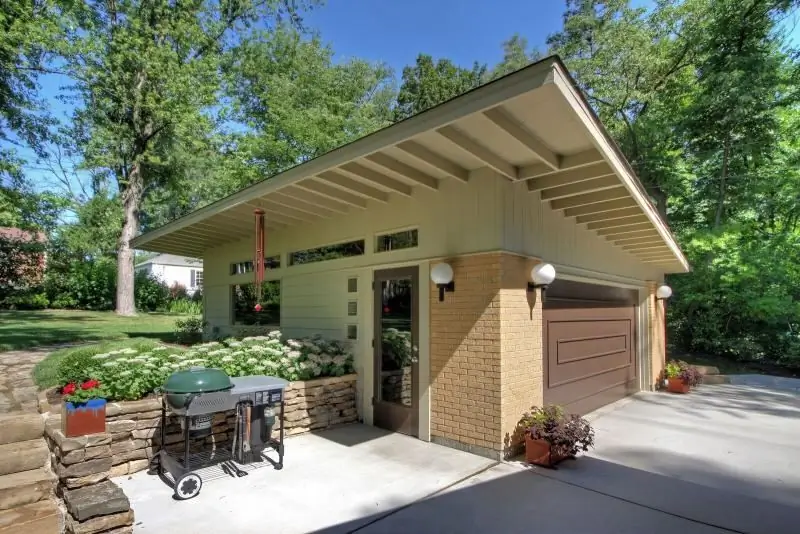
Existing types of pitched roofs. Features of creating and maintaining such a structure in their own hands. What tools and materials you need to have
Waterproofing The Roof Of The Garage, How To Do It Right, Including With Your Own Hands, As Well As The Features Of Its Device And Installation
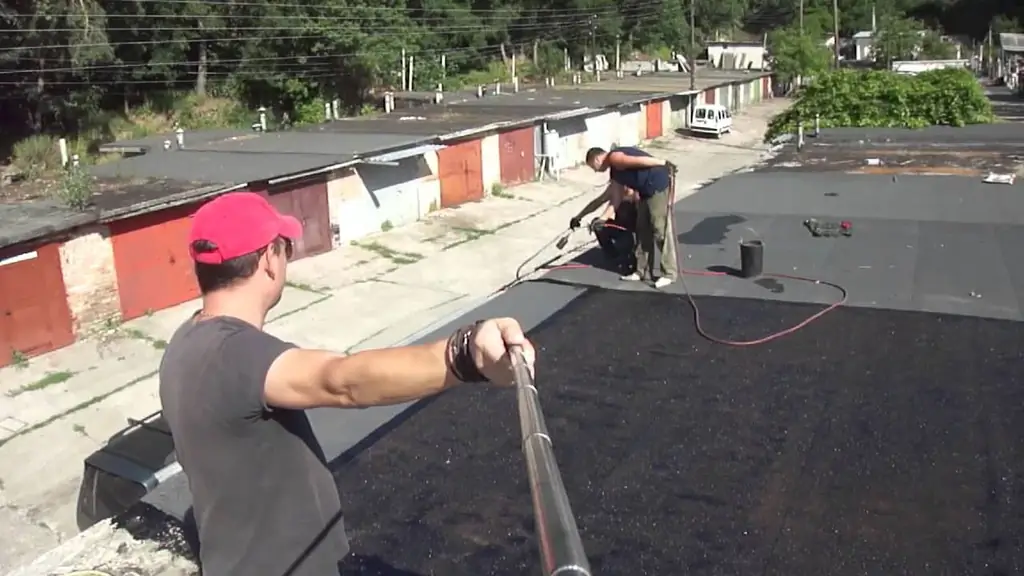
Materials that protect the garage roof from moisture. Waterproofing tools. Laying material on different types of roofs. Replacing the waterproofer
Roofing Elements Made Of Metal Tiles, Including Their Description And Characteristics, As Well As The Ridge For The Roof, Its Structure And Installation
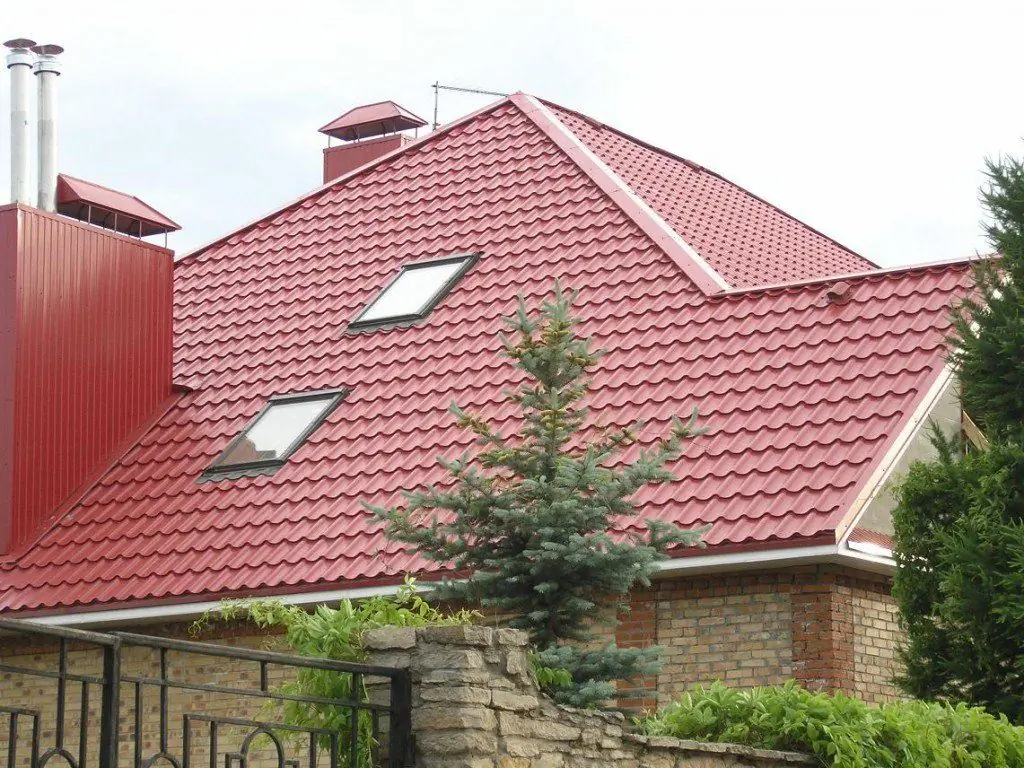
The main elements used in the construction of metal roofing. Their description, characteristics and purpose. Features of mounting the ridge strip
Lathing For Monterrey Metal Tiles, Including A Diagram And Installation, As Well As How To Correctly Calculate The Amount Of Material

Sheathing device for metal tiles "Monterrey", the recommended dimensions and the scheme for calculating the required amount of sawn timber. Installation procedure
Roof Waterproofing And Its Types, As Well As Features Of Its Design And Installation, Depending On The Roofing Material
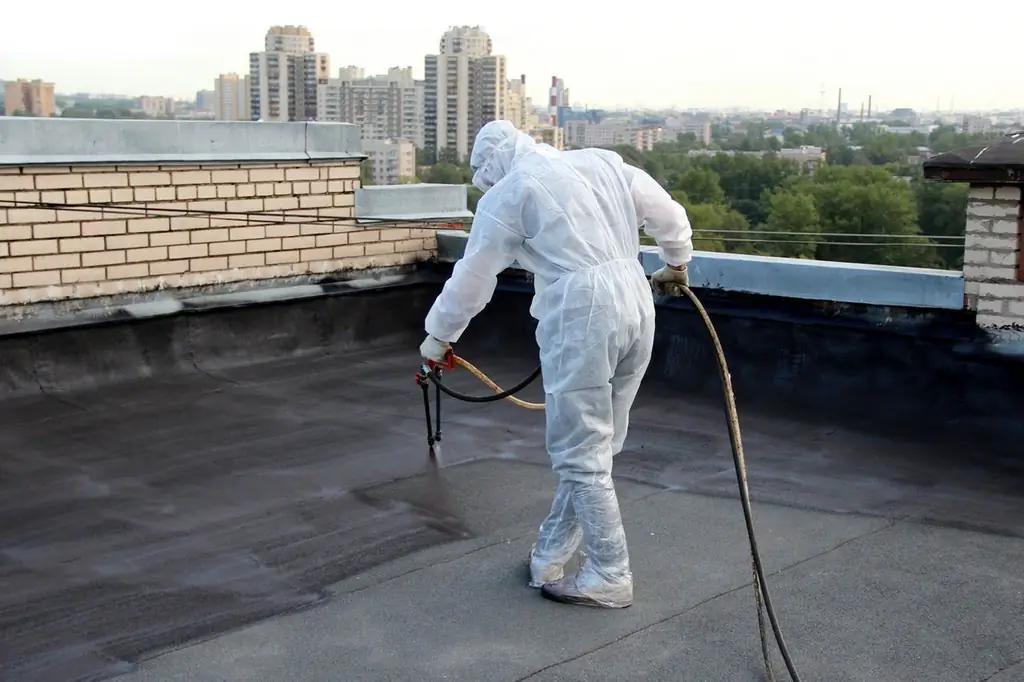
What materials can be used to arrange reliable waterproofing of the roof and how to install it
